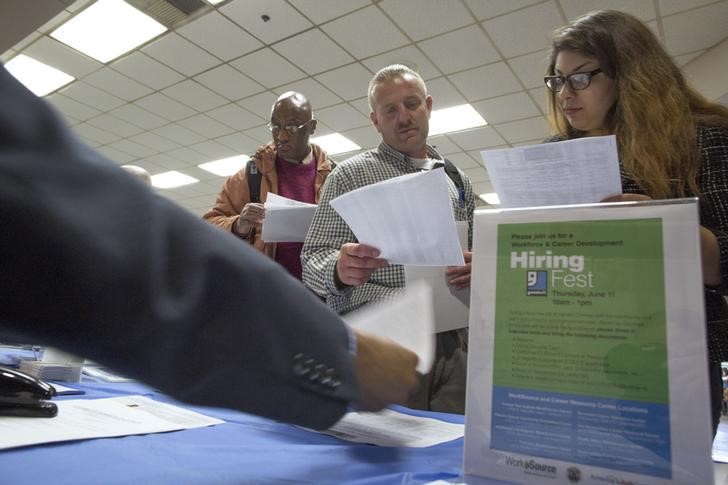By Geoffrey Smith
Investing.com -- Job creation in the U.S. slowed sharply in August as the spread of Covid-19 across southern states and the big coastal cities increasingly acted as a brake on hiring.
Nonfarm payrolls expanded by only 235,000 through the middle of last month, the Department of Labor said on Friday. That was the smallest gain in seven months and far short of expectations for a gain of 750,000. The disappointment was only slightly mitigated by an upward revision of over 100,000 in July's job gains, to over 1.05 million.
The numbers all but rule out an early move by the Federal Reserve to start running down the bond purchases that have been the mainstay of its monetary support for the economy since the first wave of the pandemic. The spread of the delta variant of the coronavirus, more highly-transmissible than previous strains, had been flagged as a key variable in starting the withdrawal of stimulus by Fed Chair Jerome Powell in his speech at Jackson Hole last week.
The report was dominated by the failure of the leisure and hospitality sectors - labor-intensive sectors with high levels of direct interface with customers - to generate any net jobs at all in the month, after being the biggest driver of job growth in the previous two months.
"While payrolls have recovered dramatically given the magnitude of the Covid recession, the deceleration in August raises the specter of a slowdown similar to what we saw last winter," said Daniel Zhao, senior economist with Glassdoor, via Twitter (NYSE:TWTR). He pointed out that overall employment is still more than 5 million below its pre-pandemic level.
U.S. stock futures turned negative in response to the news, however, seeing negative implications for the strength of the economic recovery. Despite the weak-looking headline number, average earnings rose 0.6% on the month, rather than slowing to 0.3% as expected. The annual rate of average earnings accelerated to 4.3%, the highest in six months.
By 8:45 AM ET (1245 GMT), Dow Jones futures were down 28 points, or 0.1%, while S&P 500 futures and Nasdaq 100 futures were down by a similar amount. The yield on the benchmark 10-year U.S. Treasury bond rose 3 basis points to 1.32%, its highest level in a week.
